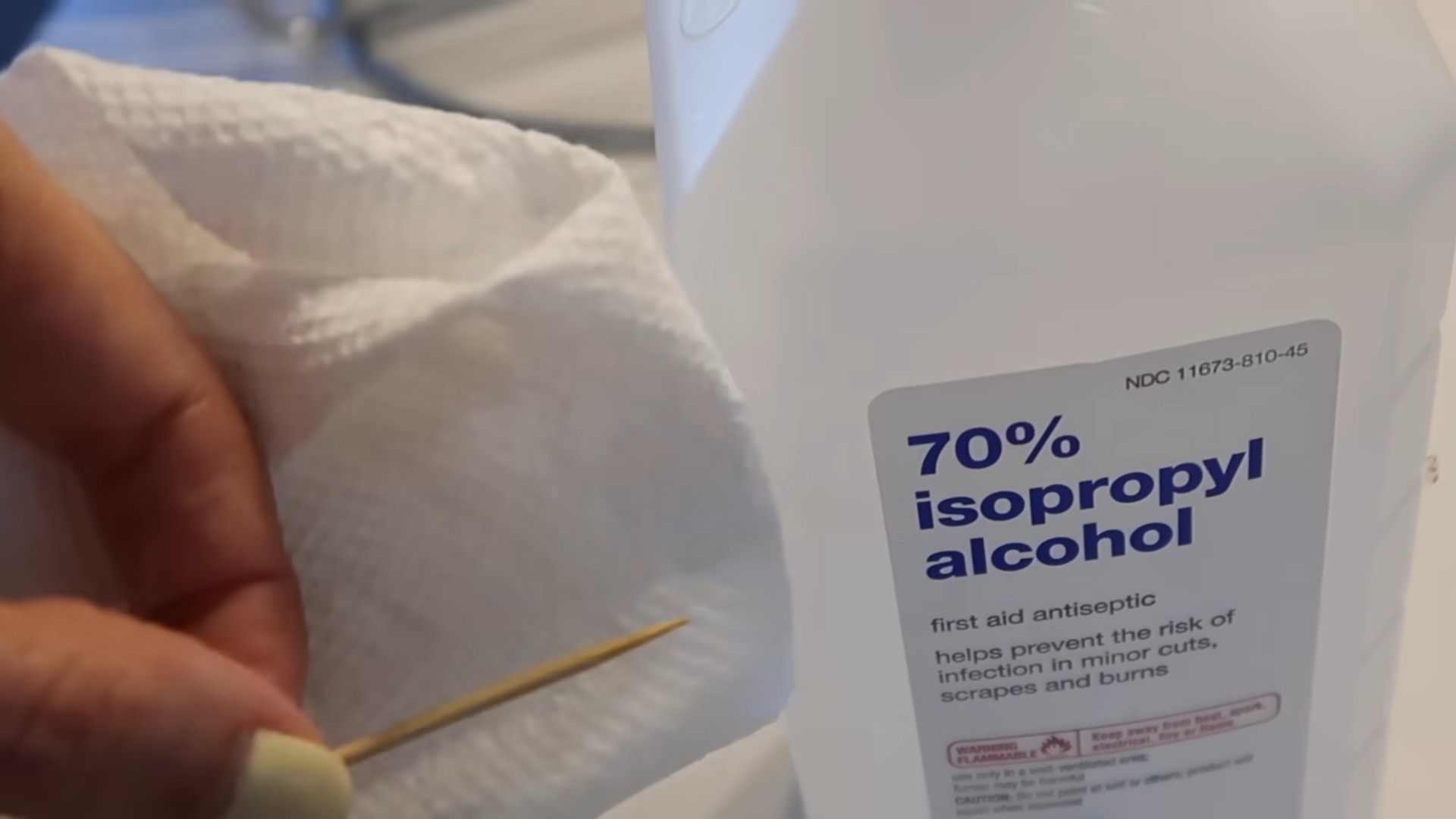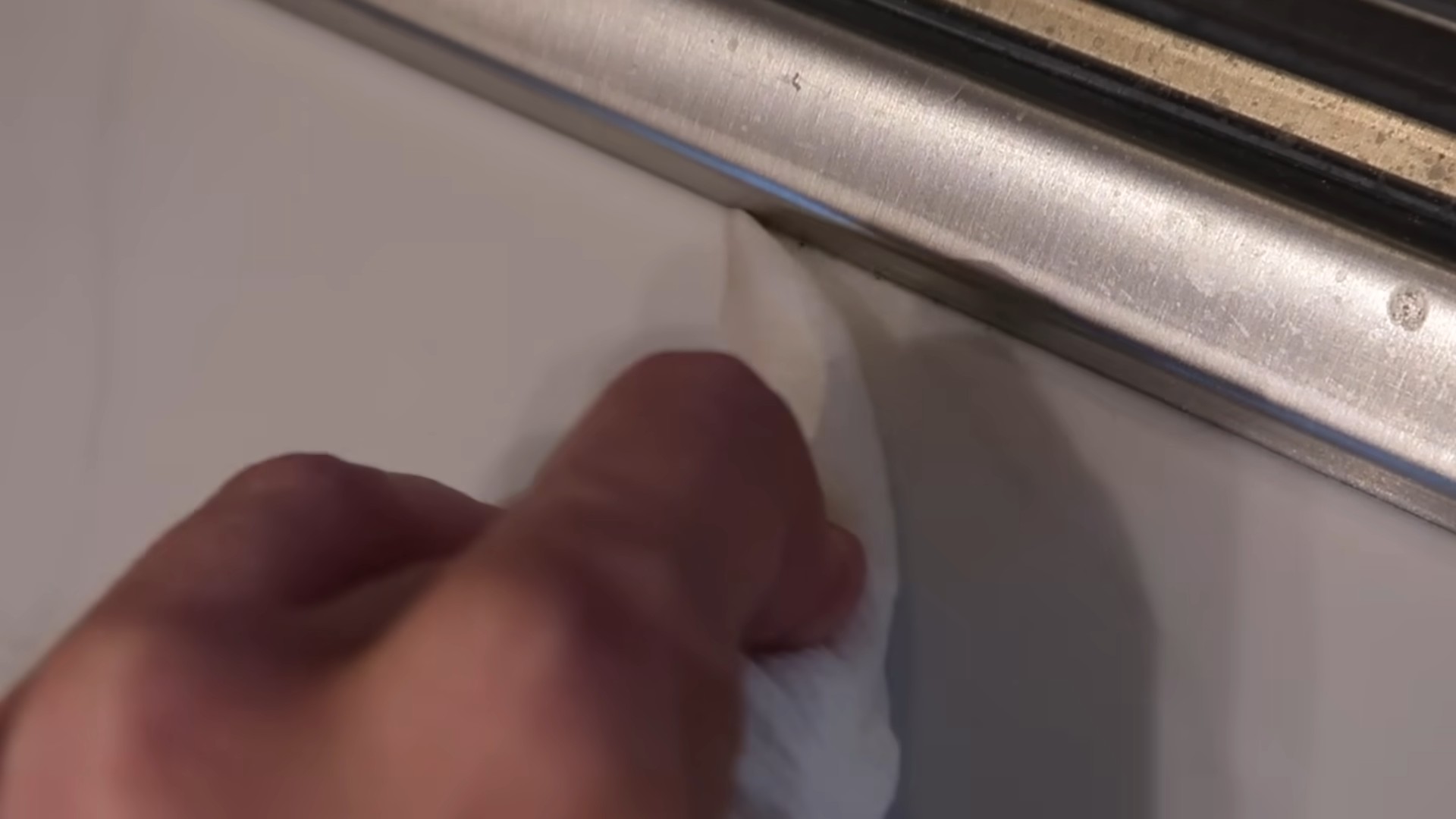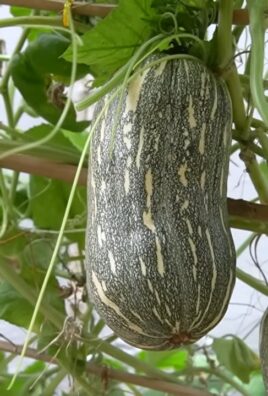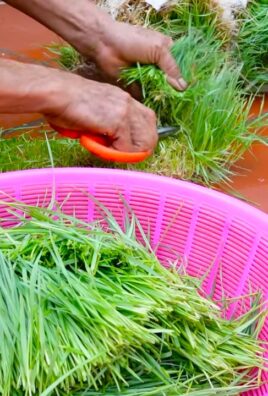Growing Water Spinach DIY: Ever dreamt of harvesting fresh, vibrant greens right from your own backyard? I know I have! There’s something incredibly satisfying about nurturing a plant from seed to table, and with water spinach, that dream can become a delicious reality, even if you don’t have a sprawling garden.
Water spinach, also known as Ong Choy or Kang Kong, has a rich history, deeply rooted in Asian cuisines. For centuries, it’s been a staple in stir-fries, soups, and salads, prized for its mild flavor and impressive nutritional value. Beyond its culinary appeal, growing water spinach is surprisingly easy, making it a perfect project for beginner gardeners and seasoned pros alike.
But why should you embark on this growing water spinach DIY adventure? Well, imagine skipping those trips to the grocery store for wilted, overpriced greens. Think about the joy of serving a meal featuring ingredients you’ve personally cultivated. Plus, water spinach is a fast-growing plant, offering a quick return on your investment of time and effort. In this article, I’ll share my favorite tips and tricks for successfully growing water spinach at home, even if you’re short on space or experience. Get ready to unleash your inner gardener and enjoy the bountiful harvest!

Growing Water Spinach (Ong Choy) at Home: A Beginner’s Guide
Hey there, fellow gardening enthusiasts! Ever wanted to grow your own fresh, delicious water spinach (also known as Ong Choy or Kang Kong)? It’s surprisingly easy, even if you don’t have a sprawling garden. I’m going to walk you through everything you need to know to cultivate this tasty green right in your own home. Get ready to enjoy stir-fries, soups, and salads bursting with homegrown goodness!
What You’ll Need
Before we dive in, let’s gather our supplies. This is a pretty low-cost project, which is always a win!
* Water Spinach Seeds or Cuttings: You can find seeds online or at your local Asian grocery store. Cuttings are another option, especially if you know someone who already grows water spinach.
* A Container: A large bucket, tub, or even a repurposed storage container will work. Aim for something at least 12 inches deep and wide.
* Potting Mix: A good quality potting mix is essential for healthy growth.
* Water: Obviously! You’ll need plenty of water to keep your water spinach happy.
* Fertilizer (Optional): A balanced liquid fertilizer can boost growth, but it’s not strictly necessary.
* Sunlight: Water spinach loves sunshine, so choose a spot that gets at least 6 hours of direct sunlight per day.
* A Small Bowl or Tray (for sprouting seeds): If you’re starting from seeds, this will help with germination.
Choosing Your Growing Method: Seeds vs. Cuttings
You have two main options for starting your water spinach journey: seeds or cuttings. Both are relatively straightforward, but each has its own advantages.
* Seeds: Starting from seeds gives you more control over the entire process. You’ll get to witness the magic of germination and watch your little seedlings sprout.
* Cuttings: Using cuttings is faster and easier. If you have access to healthy water spinach plants, you can simply snip off a few stems and root them.
Growing Water Spinach from Seeds: A Step-by-Step Guide
If you’re opting for the seed route, here’s how to get started:
1. Soak the Seeds: To improve germination rates, soak your water spinach seeds in warm water for 12-24 hours. This helps soften the seed coat and encourages sprouting. I usually put them in a small bowl and leave them on the counter overnight.
2. Sprout the Seeds (Optional but Recommended): While you can directly sow the seeds into your container, I’ve found that sprouting them first gives them a head start. Place the soaked seeds on a damp paper towel in a small bowl or tray. Cover the bowl with plastic wrap to create a humid environment. Keep the paper towel moist and place the bowl in a warm, dark location. You should see sprouts emerging within a few days.
3. Prepare Your Container: Fill your container with potting mix, leaving about an inch or two of space at the top. Water the potting mix thoroughly until it’s evenly moist but not soggy.
4. Sow the Seeds or Plant the Sprouts: If you sprouted your seeds, gently transfer them to the container, spacing them about 2-3 inches apart. If you’re directly sowing the seeds, plant them about ½ inch deep and cover them with potting mix.
5. Water Gently: Water the newly planted seeds or sprouts gently to avoid disturbing them.
6. Provide Sunlight: Place your container in a sunny location that receives at least 6 hours of direct sunlight per day.
7. Keep the Soil Moist: Water spinach thrives in moist conditions, so check the soil regularly and water whenever the top inch feels dry. Don’t let the soil dry out completely.
8. Fertilize (Optional): If you want to give your water spinach a boost, you can fertilize it every 2-3 weeks with a balanced liquid fertilizer. Follow the instructions on the fertilizer package.
Growing Water Spinach from Cuttings: An Easier Alternative
If you have access to water spinach cuttings, this method is even simpler:
1. Obtain Cuttings: Take cuttings from healthy water spinach plants. Choose stems that are about 6-8 inches long and have several nodes (the points where leaves emerge).
2. Remove Lower Leaves: Remove the leaves from the bottom 2-3 inches of the cuttings. This will encourage root growth.
3. Root the Cuttings: There are two ways to root your cuttings:
* Water Method: Place the cuttings in a glass or jar of water, ensuring that the nodes are submerged. Change the water every 1-2 days. Roots should start to emerge within a week or two.
* Soil Method: Plant the cuttings directly into your prepared container, burying the bottom 2-3 inches of the stems. Keep the soil consistently moist.
4. Provide Sunlight: Place your container in a sunny location that receives at least 6 hours of direct sunlight per day.
5. Keep the Soil Moist (if using the soil method): If you’re rooting the cuttings directly in soil, keep the soil consistently moist.
6. Transplant (if using the water method): Once the cuttings have developed a good root system (about 1-2 inches long), gently transplant them into your prepared container. Space them about 2-3 inches apart.
7. Fertilize (Optional): As with seeds, you can fertilize your water spinach cuttings every 2-3 weeks with a balanced liquid fertilizer.
Maintaining Your Water Spinach: Tips for Success
Once your water spinach is established, here are a few tips to keep it thriving:
* Water Regularly: Water spinach loves water, so don’t let the soil dry out. Check the soil moisture daily and water as needed.
* Provide Plenty of Sunlight: Water spinach needs at least 6 hours of direct sunlight per day to grow well.
* Fertilize Regularly (Optional): Fertilizing every 2-3 weeks can help boost growth and yield.
* Pinch Back the Stems: Pinching back the stems encourages branching and bushier growth. This will result in a higher yield. Simply snip off the tips of the stems with your fingers or scissors.
* Control Pests: Water spinach is generally pest-resistant, but occasionally aphids or spider mites may appear. If you notice any pests, you can try spraying them with insecticidal soap or neem oil.
* Consider a Trellis or Support: As your water spinach grows, it may start to sprawl. You can provide a trellis or other support to keep it upright and tidy.
Harvesting Your Water Spinach: Enjoying the Fruits (or Vegetables!) of Your Labor
The best part of growing your own water spinach is, of course, harvesting and enjoying it!
1. When to Harvest: You can start harvesting your water spinach about 4-6 weeks after planting. The stems should be about 8-12 inches long.
2. How to Harvest: Use scissors or a sharp knife to cut the stems about 4-6 inches from the base of the plant. This will encourage new growth.
3. Harvest Regularly: Harvest your water spinach regularly to encourage continuous production.
4. Storage: Freshly harvested water spinach is best used immediately. However, you can store it in the refrigerator for a few days. Wrap the stems in a damp paper towel and place them in a plastic bag.
Troubleshooting: Common Issues and Solutions
Even with the best care, you might encounter a few challenges along the way. Here are some common issues and how to address them:
* Yellowing Leaves: Yellowing leaves can be a sign of nutrient deficiency. Try fertilizing your water spinach with a balanced liquid fertilizer.
* Slow Growth: Slow growth can be caused by insufficient sunlight, lack of water, or nutrient deficiency. Make sure your water spinach is getting enough sunlight and water, and consider fertilizing it.
* Pests: As mentioned earlier, aphids and spider mites can sometimes be a problem. Treat them with insecticidal soap or neem oil.
* Leggy Growth: Leggy growth (long, spindly stems with few leaves) is usually a sign of insufficient sunlight. Move your water spinach to a sunnier location.
Enjoying Your Homegrown Water Spinach: Recipe Ideas
Now that you’ve successfully grown your own water spinach, it’s time to enjoy it! Here are a few recipe ideas to get you started:
* Water Spinach Stir-Fry: This is a classic and easy way to enjoy water spinach. Simply stir-fry it with garlic, ginger, and your favorite sauce (soy sauce, oyster sauce, or hoisin sauce all work well).
* Water Spinach Soup: Add water spinach to your favorite soup recipes for a boost of nutrients and flavor.
*

Conclusion
So, there you have it! Growing your own water spinach, or kangkong, at home is not only surprisingly simple but also incredibly rewarding. Forget those wilted, overpriced bunches at the grocery store. With this easy DIY method, you can have a constant supply of fresh, crisp, and vibrant water spinach right at your fingertips.
Why is this a must-try? Because it empowers you to control the quality of your food. You know exactly what goes into growing your water spinach – no harmful pesticides, no questionable fertilizers, just pure, natural goodness. Plus, the flavor of homegrown water spinach is simply unmatched. It’s more tender, more flavorful, and bursting with a freshness you just can’t find in store-bought varieties.
Beyond the superior taste and quality, this DIY project is also incredibly budget-friendly. Once you have your initial setup, the cost of maintaining your water spinach garden is minimal. You’re essentially turning kitchen scraps and sunlight into delicious, nutritious greens. Think of all the money you’ll save!
But the benefits don’t stop there. Growing water spinach is also a fantastic way to connect with nature, even if you live in an urban environment. It’s a calming and therapeutic activity that can help reduce stress and improve your overall well-being. Watching your plants thrive is incredibly satisfying, and knowing that you’re contributing to a more sustainable lifestyle is an added bonus.
Ready to take your water spinach game to the next level? Consider experimenting with different growing mediums. While soil works perfectly well, you can also try hydroponics for even faster growth and higher yields. You can also explore different varieties of water spinach, each with its own unique flavor and texture. Some varieties are more heat-tolerant, while others are better suited for cooler climates.
Another fun variation is to grow your water spinach in a decorative container. This not only adds a touch of greenery to your home but also makes it easier to harvest and maintain your plants. Get creative with your container choices – old buckets, repurposed tubs, or even hanging baskets can all work beautifully.
Don’t be afraid to experiment with different fertilizers as well. While organic options like compost tea and worm castings are excellent choices, you can also use commercially available fertilizers specifically formulated for leafy greens. Just be sure to follow the instructions carefully to avoid over-fertilizing.
We are confident that you will find this DIY water spinach growing method to be a game-changer. It’s easy, affordable, and incredibly rewarding. So, what are you waiting for? Give it a try and experience the joy of harvesting your own fresh, delicious water spinach.
We’d love to hear about your experiences! Share your photos, tips, and tricks in the comments below. Let’s build a community of water spinach enthusiasts and inspire others to grow their own food. Happy growing!
Frequently Asked Questions (FAQ)
What exactly is water spinach and why should I grow it?
Water spinach, also known as kangkong, is a semi-aquatic leafy green vegetable popular in Southeast Asian cuisine. It’s incredibly versatile and can be stir-fried, steamed, boiled, or added to soups and salads. Growing your own water spinach allows you to have a constant supply of fresh, pesticide-free greens at a fraction of the cost of buying it from the store. Plus, the flavor of homegrown water spinach is far superior to store-bought varieties. It’s more tender, more flavorful, and bursting with freshness.
How long does it take to grow water spinach from seed?
Water spinach is a fast-growing vegetable. You can typically expect to harvest your first crop within 4-6 weeks of planting the seeds. The exact time will depend on factors such as temperature, sunlight, and the specific variety of water spinach you’re growing. Providing optimal conditions will encourage faster growth.
What are the best conditions for growing water spinach?
Water spinach thrives in warm, humid conditions with plenty of sunlight. Aim for at least 6 hours of direct sunlight per day. The ideal temperature range is between 70°F and 85°F (21°C and 29°C). Water spinach also prefers moist soil or even standing water, which is why it’s often grown in flooded fields in its native regions. Ensure the soil is well-draining but consistently moist.
Can I grow water spinach indoors?
Yes, you can grow water spinach indoors, especially if you live in a climate with cold winters. You’ll need a sunny windowsill or a grow light to provide adequate light. Make sure to keep the soil consistently moist and provide good air circulation to prevent fungal diseases. Growing water spinach indoors can be a great way to enjoy fresh greens year-round.
What kind of soil should I use for growing water spinach?
Water spinach is not particularly picky about soil type, but it prefers a rich, well-draining soil with a slightly acidic to neutral pH (around 6.0 to 7.0). You can amend your soil with compost or other organic matter to improve its fertility and drainage. A good quality potting mix will also work well, especially if you’re growing water spinach in containers.
How often should I water my water spinach plants?
Water spinach needs consistent moisture to thrive. Water your plants regularly, especially during hot, dry weather. The soil should always be moist to the touch, but not waterlogged. If you’re growing water spinach in containers, you may need to water it more frequently than if you’re growing it in the ground. Consider using a self-watering container to simplify watering.
What kind of fertilizer should I use for water spinach?
Water spinach is a heavy feeder, so it benefits from regular fertilization. You can use a balanced fertilizer (e.g., 10-10-10) or a fertilizer specifically formulated for leafy greens. Organic options like compost tea, worm castings, and fish emulsion are also excellent choices. Apply fertilizer according to the package instructions, being careful not to over-fertilize.
How do I harvest water spinach?
You can harvest water spinach by cutting the stems about 6-8 inches from the base of the plant. This will encourage new growth and allow you to harvest multiple times from the same plant. Harvest regularly to keep your plants producing new leaves. The younger leaves are more tender and flavorful.
Are there any pests or diseases that affect water spinach?
Water spinach is generally resistant to pests and diseases, but it can be susceptible to aphids, spider mites, and fungal diseases like powdery mildew. Inspect your plants regularly for signs of infestation or disease and take appropriate action if necessary. Organic pest control methods, such as insecticidal soap and neem oil, can be effective for controlling aphids and spider mites. Good air circulation and proper watering practices can help prevent fungal diseases.
Can I eat the entire water spinach plant?
Yes, you can eat the entire water spinach plant, including the leaves and stems. However, the stems can be a bit tougher than the leaves, so you may want to cook them for a longer time. The flowers are also edible, but they are not as flavorful as the leaves and stems.
Is water spinach safe to eat raw?
While water spinach is generally safe to eat raw, it’s important to wash it thoroughly to remove any dirt or debris. Some sources recommend cooking water spinach to kill any potential bacteria or parasites, especially if it’s grown in water that may be contaminated. If you’re unsure about the safety of your water spinach, it’s best to cook it before eating it.
How do I store water spinach?
Store water spinach in the refrigerator in a plastic bag or container. It will stay fresh for several days. You can also blanch and freeze water spinach for longer storage. To blanch, briefly boil the water spinach for 1-2 minutes, then immediately transfer it to an ice bath to stop the cooking process. Drain well and freeze in freezer bags or containers.
Can I grow water spinach in standing water?
Yes, water spinach thrives in moist conditions and can even be grown in standing water. This is how it’s traditionally grown in many parts of Asia. If you’re growing water spinach in standing water, make sure to change the water regularly to prevent it from becoming stagnant.
Is growing water spinach legal everywhere?
In some regions, water spinach is considered an invasive species and is restricted or prohibited. Before you start growing water spinach, check with your local agricultural extension office to ensure that it’s legal to grow in your area. Be responsible and prevent the spread of invasive species.




Leave a Comment